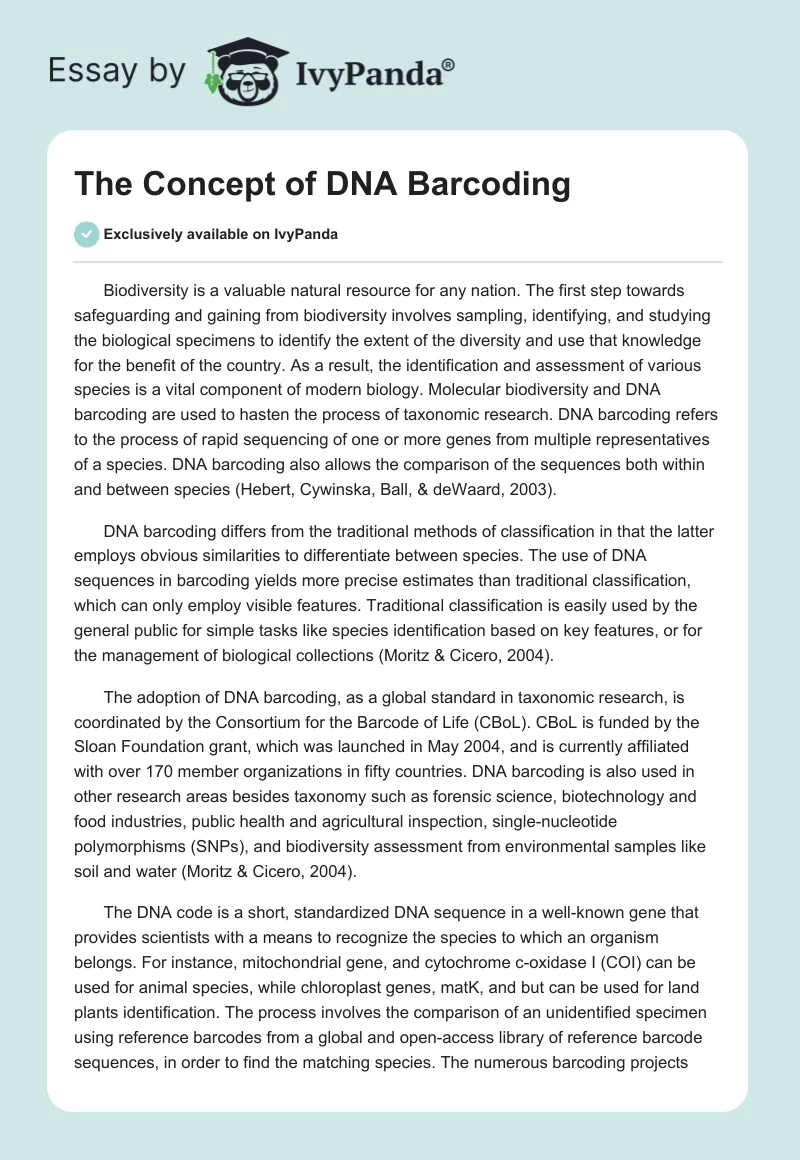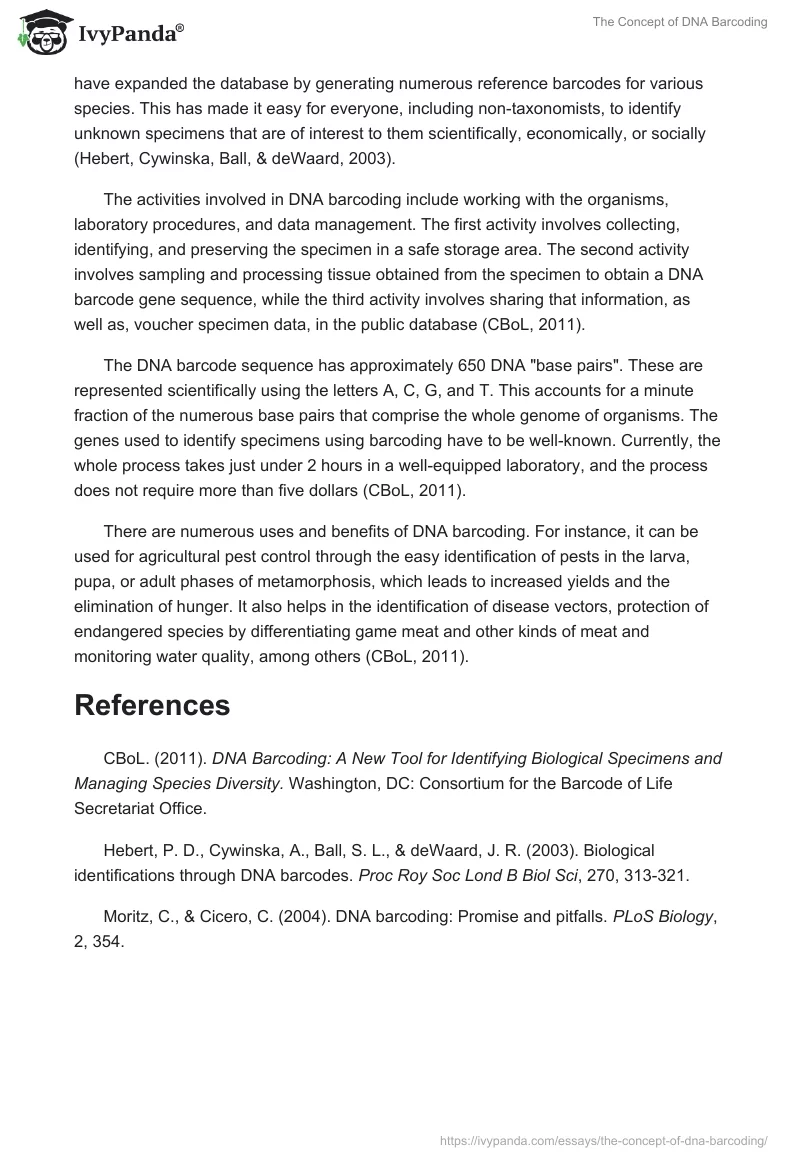Biodiversity is a valuable natural resource for any nation. The first step towards safeguarding and gaining from biodiversity involves sampling, identifying, and studying the biological specimens to identify the extent of the diversity and use that knowledge for the benefit of the country. As a result, the identification and assessment of various species is a vital component of modern biology. Molecular biodiversity and DNA barcoding are used to hasten the process of taxonomic research. DNA barcoding refers to the process of rapid sequencing of one or more genes from multiple representatives of a species. DNA barcoding also allows the comparison of the sequences both within and between species (Hebert, Cywinska, Ball, & deWaard, 2003).
DNA barcoding differs from the traditional methods of classification in that the latter employs obvious similarities to differentiate between species. The use of DNA sequences in barcoding yields more precise estimates than traditional classification, which can only employ visible features. Traditional classification is easily used by the general public for simple tasks like species identification based on key features, or for the management of biological collections (Moritz & Cicero, 2004).
The adoption of DNA barcoding, as a global standard in taxonomic research, is coordinated by the Consortium for the Barcode of Life (CBoL). CBoL is funded by the Sloan Foundation grant, which was launched in May 2004, and is currently affiliated with over 170 member organizations in fifty countries. DNA barcoding is also used in other research areas besides taxonomy such as forensic science, biotechnology and food industries, public health and agricultural inspection, single-nucleotide polymorphisms (SNPs), and biodiversity assessment from environmental samples like soil and water (Moritz & Cicero, 2004).
The DNA code is a short, standardized DNA sequence in a well-known gene that provides scientists with a means to recognize the species to which an organism belongs. For instance, mitochondrial gene, and cytochrome c-oxidase I (COI) can be used for animal species, while chloroplast genes, matK, and but can be used for land plants identification. The process involves the comparison of an unidentified specimen using reference barcodes from a global and open-access library of reference barcode sequences, in order to find the matching species. The numerous barcoding projects have expanded the database by generating numerous reference barcodes for various species. This has made it easy for everyone, including non-taxonomists, to identify unknown specimens that are of interest to them scientifically, economically, or socially (Hebert, Cywinska, Ball, & deWaard, 2003).
The activities involved in DNA barcoding include working with the organisms, laboratory procedures, and data management. The first activity involves collecting, identifying, and preserving the specimen in a safe storage area. The second activity involves sampling and processing tissue obtained from the specimen to obtain a DNA barcode gene sequence, while the third activity involves sharing that information, as well as, voucher specimen data, in the public database (CBoL, 2011).
The DNA barcode sequence has approximately 650 DNA “base pairs”. These are represented scientifically using the letters A, C, G, and T. This accounts for a minute fraction of the numerous base pairs that comprise the whole genome of organisms. The genes used to identify specimens using barcoding have to be well-known. Currently, the whole process takes just under 2 hours in a well-equipped laboratory, and the process does not require more than five dollars (CBoL, 2011).
There are numerous uses and benefits of DNA barcoding. For instance, it can be used for agricultural pest control through the easy identification of pests in the larva, pupa, or adult phases of metamorphosis, which leads to increased yields and the elimination of hunger. It also helps in the identification of disease vectors, protection of endangered species by differentiating game meat and other kinds of meat and monitoring water quality, among others (CBoL, 2011).
References
CBoL. (2011). DNA Barcoding: A New Tool for Identifying Biological Specimens and Managing Species Diversity. Washington, DC: Consortium for the Barcode of Life Secretariat Office.
Hebert, P. D., Cywinska, A., Ball, S. L., & deWaard, J. R. (2003). Biological identifications through DNA barcodes. Proc Roy Soc Lond B Biol Sci, 270, 313-321.
Moritz, C., & Cicero, C. (2004). DNA barcoding: Promise and pitfalls. PLoS Biology, 2, 354.


